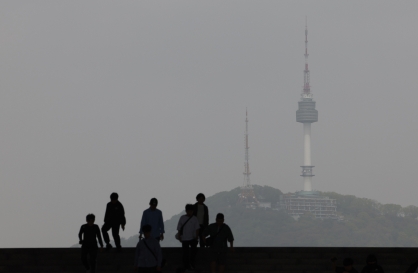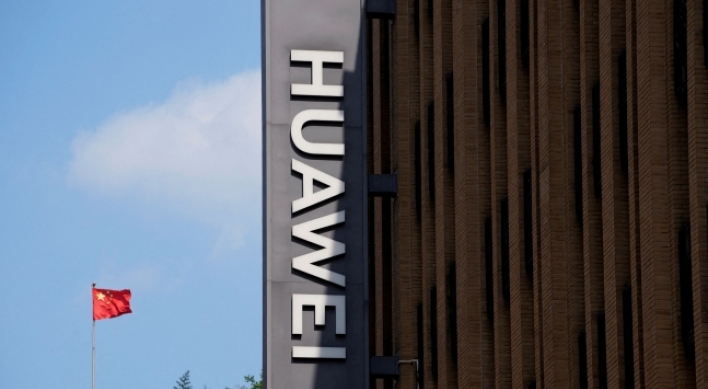[Fiona Chan] Fears of Asian financial crisis may be overblown
By Korea HeraldPublished : Aug. 29, 2013 - 19:41
The “taper terror” returned to haunt Asian markets last week, spurring investors to dump regional shares and currencies on growing dread that the United States central bank may reduce its gigantic stimulus program next month.
They fear that a pullback of U.S. quantitative easing will mean less liquidity going into Asian assets while also raising U.S. interest rates and the greenback ― an outcome that will make Asia less attractive as an investment destination.
 But a few observers are entertaining an even scarier vision: the specter of a repeat of the Asian financial crisis.
But a few observers are entertaining an even scarier vision: the specter of a repeat of the Asian financial crisis.
They see eerie echoes of the 1990s. Across Asia, economies have been borrowing heavily to fuel spending, sparking a run-up in asset prices, inflation and credit intensity ― the amount of debt needed to generate each unit of economic expansion.
And just as it did in 1997, the party may now be coming to an abrupt end.
Growth in Asia’s trade-dependent economies has slowed and once-surging capital inflows are reversing direction, depressing currency values in the region and making it difficult for nations to balance their external accounts.
Interest rates, which were slashed to near zero in developed countries to spur growth, are also rising again, which means firms and households rolling over their debt will do so at higher cost.
Some economists portend the tapering of QE will be the trigger that exposes deeper economic weaknesses, by removing cheap foreign funding from Asia just when it is most reliant on it.
This could mean the region is headed for more serious and lasting trouble than a one-off panic in the markets, they warn.
Investors have made it clear which Asian economies they are most concerned about.
India’s rupee has fallen almost 20 percent against the greenback this year and hit new all-time lows, although it regained some ground late last week.
Indonesia’s rupiah has lost about 12 percent, while the Malaysian ringgit is down about 8 percent and the Thai baht has shed 5 percent. All reached their lowest levels against the U.S. dollar since 2009 or 2010 last week.
These four countries are in the line of fire as a slowdown in China and lower commodity prices weigh on their exports. This has led to deteriorating current account positions and weaker growth.
India, Indonesia and Thailand have been running record or near-record current account deficits, which means they are not exporting enough to pay for their imports and must borrow from other countries or run down their reserves. Malaysia is still in surplus, although not by much.
The economic outlook is also dimming. Sluggish exports have led Malaysia, Thailand and India to cut growth forecasts for this year, with Thailand slipping into recession in the second quarter.
Indonesia is also fighting rising inflation, which led it to raise interest rates this month.
Meanwhile debt levels have been rising. Malaysia’s households already owe 177 percent of their income, the highest in Asia, according to a Standard Chartered report last month. In Thailand, it is the speed of the rise in debt that is worrying: Its recent run-up in credit has been one of the fastest in the region.
The situation is tricky for policymakers. If they cut interest rates to stimulate growth, they risk more capital outflows as investors seek higher returns elsewhere, making it even more difficult for them to address their current account gaps.
Malaysia and Indonesia are especially vulnerable, given their reliance on foreign investors. More than 30 percent of their government bonds are held by foreigners, noted OCBC Bank economist Selena Ling.
But if the authorities tighten monetary policy to stabilize currencies or reduce inflation, that risks sapping economic vitality.
The worry is that policymakers, stressed by the recent capital flight, will make a wrong step. They need nuanced policies to shore up their currencies and restore investor confidence without doing so at the expense of growth.
“The speedier rise in U.S. real rates and dollar has now pushed Asia to lift its real rates at a time when its GDP (gross domestic product) growth has already been slowing,” said Morgan Stanley economists last week.
“This pro-cyclical tightening is only increasing the headwinds” to Asia’s growth, they added.
Still, most economists are not losing sleep over the situation.
“Calling it a currency and economic crisis at this juncture is missing the point somewhat, even though risks persist,” said Ling. “Asian economies have been on a steamroller boom for the last three years, and the fact is that many Asian economies are fundamentally on a much firmer economic footing this time round.”
Deutsche Bank economist Taimur Baig agrees that while the currencies of India, Indonesia and Malaysia are particularly stressed, they do not “appear to be in danger of falling into an outright currency crisis.”
“Reserves cover, despite recent declines, is still ample. Even when one adds up the entire stock of short-term liabilities and the projected current account needs for this year, all three economies have reserves to finance them comfortably,” he said.
The picture also looks brighter in most other Asian economies, although none was spared the sell-off last week.
Those with current account surpluses, large foreign currency reserves to counter exchange rate volatility and solid banks and growth policies are well-placed to weather the storm.
Singapore, for one, has several factors in its favor. Its trade account is constantly in the black, it has robust reserves and does not rely on debt to fund government spending, and it received relatively fewer capital inflows from QE.
Singapore’s Deputy Prime Minister Tharman Shanmugaratnam said last Friday that QE tapering in itself is “not a bad thing” for Asian economies.
“It is not in anyone’s interest, including the emerging economies, for very low global interest rates to continue indefinitely,” he said. “Low or negative real interest rates have inevitably led to a search for yield, and a build-up of financial imbalances in Asia.”
Other Asian economies that have strong current account positions, which means they export much more than they import ― such as the Philippines, South Korea and Taiwan ― are also unlikely to be dragged down.
Credit Suisse economist Christiaan Tuntono noted that South Korea and Taiwan are running comfortable current account surpluses of 5 percent and 11 percent of GDP respectively.
The Philippines is also on a better economic footing than other ASEAN neighbors due to its persistent current account surplus and lower reliance on commodity exports, said Credit Suisse economist Michael Wan.
As a whole, economists such as Jimmy Koh, United Overseas Bank’s head of research and investor relations, are fairly sanguine about history not repeating itself in Asia. “We believe that though QE tapering will be a short-term destabilizing factor in Asia, the economic fundamentals of the region have strengthened due to the prudent economic policies implemented since the 1997 Asian financial crisis,” he said.
Foreign reserves and current account levels are generally strong, and most countries now have flexible exchange rate policies, making a 1990s-style currency crisis and contagion more unlikely. Asian policymakers are also more proactive about managing credit cycles, said Koh.
Companies and banks are also financially healthier. While there will be some inevitable pain as borrowing costs rise and asset markets adjust, a domestic banking crisis is less likely, added Ling.
Another upbeat sign often lost in the market muddle is that QE will be tapered only once the Federal Reserve is convinced that the U.S. economic recovery is self-sustaining.
All signs so far ― from manufacturing to consumer spending ― are pointing to a firmer rebound, not just in the U.S. but also in other recently stagnant developed economies like Europe and Japan.
This is likely to give a bigger boost to global growth and Asia’s exports, although lingering shakiness means the benefits may not be felt until next year at least.
Meanwhile China, while down, is not out. A surprise turnaround in its factory activity this month hints at a stabilization that bodes well for its neighbors, as does its move to a more sustainable growth trajectory.
So while Asia may be in for a rocky ride as the U.S. eases out of QE, most economies are in a good position to manage the adjustment without giving in to fears of a new crisis.
As former U.S. president Franklin Roosevelt, who saw the U.S. economy out of its last massive recession, once said: “The only thing we have to fear is fear itself.” Asia’s fundamentals are still strong ― there is little reason to let investor panic be stronger.
By Fiona Chan
Fiona Chan is senior economics correspondent at The Straits Times. ― Ed.
(Asia News Network)
They fear that a pullback of U.S. quantitative easing will mean less liquidity going into Asian assets while also raising U.S. interest rates and the greenback ― an outcome that will make Asia less attractive as an investment destination.
 But a few observers are entertaining an even scarier vision: the specter of a repeat of the Asian financial crisis.
But a few observers are entertaining an even scarier vision: the specter of a repeat of the Asian financial crisis.They see eerie echoes of the 1990s. Across Asia, economies have been borrowing heavily to fuel spending, sparking a run-up in asset prices, inflation and credit intensity ― the amount of debt needed to generate each unit of economic expansion.
And just as it did in 1997, the party may now be coming to an abrupt end.
Growth in Asia’s trade-dependent economies has slowed and once-surging capital inflows are reversing direction, depressing currency values in the region and making it difficult for nations to balance their external accounts.
Interest rates, which were slashed to near zero in developed countries to spur growth, are also rising again, which means firms and households rolling over their debt will do so at higher cost.
Some economists portend the tapering of QE will be the trigger that exposes deeper economic weaknesses, by removing cheap foreign funding from Asia just when it is most reliant on it.
This could mean the region is headed for more serious and lasting trouble than a one-off panic in the markets, they warn.
Investors have made it clear which Asian economies they are most concerned about.
India’s rupee has fallen almost 20 percent against the greenback this year and hit new all-time lows, although it regained some ground late last week.
Indonesia’s rupiah has lost about 12 percent, while the Malaysian ringgit is down about 8 percent and the Thai baht has shed 5 percent. All reached their lowest levels against the U.S. dollar since 2009 or 2010 last week.
These four countries are in the line of fire as a slowdown in China and lower commodity prices weigh on their exports. This has led to deteriorating current account positions and weaker growth.
India, Indonesia and Thailand have been running record or near-record current account deficits, which means they are not exporting enough to pay for their imports and must borrow from other countries or run down their reserves. Malaysia is still in surplus, although not by much.
The economic outlook is also dimming. Sluggish exports have led Malaysia, Thailand and India to cut growth forecasts for this year, with Thailand slipping into recession in the second quarter.
Indonesia is also fighting rising inflation, which led it to raise interest rates this month.
Meanwhile debt levels have been rising. Malaysia’s households already owe 177 percent of their income, the highest in Asia, according to a Standard Chartered report last month. In Thailand, it is the speed of the rise in debt that is worrying: Its recent run-up in credit has been one of the fastest in the region.
The situation is tricky for policymakers. If they cut interest rates to stimulate growth, they risk more capital outflows as investors seek higher returns elsewhere, making it even more difficult for them to address their current account gaps.
Malaysia and Indonesia are especially vulnerable, given their reliance on foreign investors. More than 30 percent of their government bonds are held by foreigners, noted OCBC Bank economist Selena Ling.
But if the authorities tighten monetary policy to stabilize currencies or reduce inflation, that risks sapping economic vitality.
The worry is that policymakers, stressed by the recent capital flight, will make a wrong step. They need nuanced policies to shore up their currencies and restore investor confidence without doing so at the expense of growth.
“The speedier rise in U.S. real rates and dollar has now pushed Asia to lift its real rates at a time when its GDP (gross domestic product) growth has already been slowing,” said Morgan Stanley economists last week.
“This pro-cyclical tightening is only increasing the headwinds” to Asia’s growth, they added.
Still, most economists are not losing sleep over the situation.
“Calling it a currency and economic crisis at this juncture is missing the point somewhat, even though risks persist,” said Ling. “Asian economies have been on a steamroller boom for the last three years, and the fact is that many Asian economies are fundamentally on a much firmer economic footing this time round.”
Deutsche Bank economist Taimur Baig agrees that while the currencies of India, Indonesia and Malaysia are particularly stressed, they do not “appear to be in danger of falling into an outright currency crisis.”
“Reserves cover, despite recent declines, is still ample. Even when one adds up the entire stock of short-term liabilities and the projected current account needs for this year, all three economies have reserves to finance them comfortably,” he said.
The picture also looks brighter in most other Asian economies, although none was spared the sell-off last week.
Those with current account surpluses, large foreign currency reserves to counter exchange rate volatility and solid banks and growth policies are well-placed to weather the storm.
Singapore, for one, has several factors in its favor. Its trade account is constantly in the black, it has robust reserves and does not rely on debt to fund government spending, and it received relatively fewer capital inflows from QE.
Singapore’s Deputy Prime Minister Tharman Shanmugaratnam said last Friday that QE tapering in itself is “not a bad thing” for Asian economies.
“It is not in anyone’s interest, including the emerging economies, for very low global interest rates to continue indefinitely,” he said. “Low or negative real interest rates have inevitably led to a search for yield, and a build-up of financial imbalances in Asia.”
Other Asian economies that have strong current account positions, which means they export much more than they import ― such as the Philippines, South Korea and Taiwan ― are also unlikely to be dragged down.
Credit Suisse economist Christiaan Tuntono noted that South Korea and Taiwan are running comfortable current account surpluses of 5 percent and 11 percent of GDP respectively.
The Philippines is also on a better economic footing than other ASEAN neighbors due to its persistent current account surplus and lower reliance on commodity exports, said Credit Suisse economist Michael Wan.
As a whole, economists such as Jimmy Koh, United Overseas Bank’s head of research and investor relations, are fairly sanguine about history not repeating itself in Asia. “We believe that though QE tapering will be a short-term destabilizing factor in Asia, the economic fundamentals of the region have strengthened due to the prudent economic policies implemented since the 1997 Asian financial crisis,” he said.
Foreign reserves and current account levels are generally strong, and most countries now have flexible exchange rate policies, making a 1990s-style currency crisis and contagion more unlikely. Asian policymakers are also more proactive about managing credit cycles, said Koh.
Companies and banks are also financially healthier. While there will be some inevitable pain as borrowing costs rise and asset markets adjust, a domestic banking crisis is less likely, added Ling.
Another upbeat sign often lost in the market muddle is that QE will be tapered only once the Federal Reserve is convinced that the U.S. economic recovery is self-sustaining.
All signs so far ― from manufacturing to consumer spending ― are pointing to a firmer rebound, not just in the U.S. but also in other recently stagnant developed economies like Europe and Japan.
This is likely to give a bigger boost to global growth and Asia’s exports, although lingering shakiness means the benefits may not be felt until next year at least.
Meanwhile China, while down, is not out. A surprise turnaround in its factory activity this month hints at a stabilization that bodes well for its neighbors, as does its move to a more sustainable growth trajectory.
So while Asia may be in for a rocky ride as the U.S. eases out of QE, most economies are in a good position to manage the adjustment without giving in to fears of a new crisis.
As former U.S. president Franklin Roosevelt, who saw the U.S. economy out of its last massive recession, once said: “The only thing we have to fear is fear itself.” Asia’s fundamentals are still strong ― there is little reason to let investor panic be stronger.
By Fiona Chan
Fiona Chan is senior economics correspondent at The Straits Times. ― Ed.
(Asia News Network)
-
Articles by Korea Herald



![[AtoZ Korean Mind] Does your job define who you are? Should it?](http://res.heraldm.com/phpwas/restmb_idxmake.php?idx=644&simg=/content/image/2024/05/06/20240506050099_0.jpg&u=)















![[K-pop's dilemma] Is Hybe-Ador conflict a case of growing pains?](http://res.heraldm.com/phpwas/restmb_idxmake.php?idx=642&simg=/content/image/2024/05/07/20240507050746_0.jpg&u=)